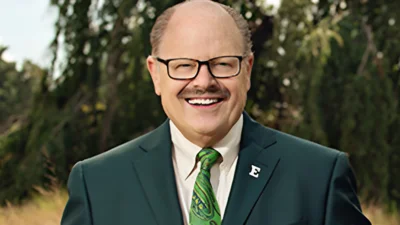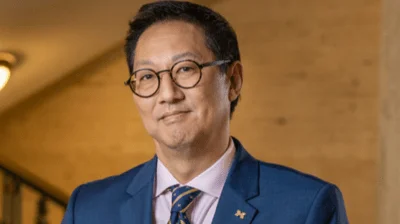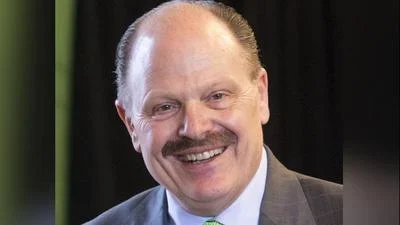Washtenaw Community College issued the following announcement on Aug. 16
A fourth trade union will make Washtenaw Community College and the Ann Arbor area its home base for instructor training when the United Union of Roofers, Waterproofers & Allied Workers holds its inaugural National Instructor Training Program June 15-19, 2020.
Roofers Union International President Kinsey M. Robinson and WCC President Dr. Rose B. Bellanca held a ceremonial contract signing today (Friday, Aug. 16) to kick off the partnership. The union, based in Washington D.C., represents 25,000 members.
“Training is a career commitment for every member of the Roofers Union,” Robinson said. “Members are challenged to adopt a positive attitude and commit to a plan of action where training is the main focus of their efforts. Training is the key building block of a rock-solid foundation for a successful organization.”
The Roofers Union joins the United Association of Plumbers, Fitters, Welders and Service Techs (UA); the International Association of Bridge, Structural, Ornamental and Reinforcing Iron Workers (Ironworkers) and the Operative Plasterers’ and Cement Masons’ International Association (OPCMIA) as international trade unions that call WCC home for summer instructor training programs.
“We are very appreciative that the United Union of Roofers, Waterproofers & Allied Workers chose Washtenaw Community College,” Bellanca said. “We are well-versed in training programs for the skilled trades and are proud to call the UA, Ironworkers and OPCMIA partners; and now are very proud to include the Roofers Union in this distinguished group. It’s a partnership that will succeed because we share the same understanding of the value of lifelong learning.”
As the OPCMIA did in 2018, the Roofers Union established a licensing agreement to adapt and customize the series of train-the-trainer professional instruction courses that representatives from WCC and the University of Michigan helped the UA to create for its training program. The curriculum covers learning styles, teaching techniques, lesson plan development, student assessments, success strategies and classroom management along with electives to help instructors become more effective presenters.
Robinson said he attended the UA training at WCC in 2015 and “witnessed first-hand the first-class facilities on campus and the commitment extended to the UA by President Bellanca and the Washtenaw staff. … At that time, I knew that Washtenaw would be our new home.”
According to Keith Vitkovich, Executive Director of the Roofers & Waterproofers Research and Education Joint Trust Fund, an estimated 100 to 150 people are expected to attend the first National Instructor Training Program in June 2020. He called the creation of the program “a huge game-changer for us.”
The union has conducted regional training programs around the country previously, but Vitkovich has long envisioned a national gathering that is better structured and establishes educational standards that can be instituted across the union’s nine regional district councils.
“I visited a UA training and knew that was an example of what we needed to be doing,” Vitkovich said. “Add to it that, with WCC, we’re dealing with a college that has already worked with the trades and understands what we need. It’s like we’re swinging the bat and hitting two home runs.”
Friday’s contract signing ceremony coincided with the end of the UA’s week-long Instructor Training Program, held on the WCC campus for the 30th consecutive year. Union Roofers officers, executives and master trainers spent the week observing the UA training.
“The need for skilled roofers and waterproofers will only increase with time. If we intend to compete and increase our work opportunities, we must provide our members with the most advanced training available,” Robinson said. “The Roofers’ National Instructor Training Program at Washtenaw will be a giant step forward for our craft. The program will provide our instructors the state-of-the-art skills they need so that our members remain the most industrious, most capable and the most resourceful workers in our industry.”
Original source can be found here.






 Alerts Sign-up
Alerts Sign-up